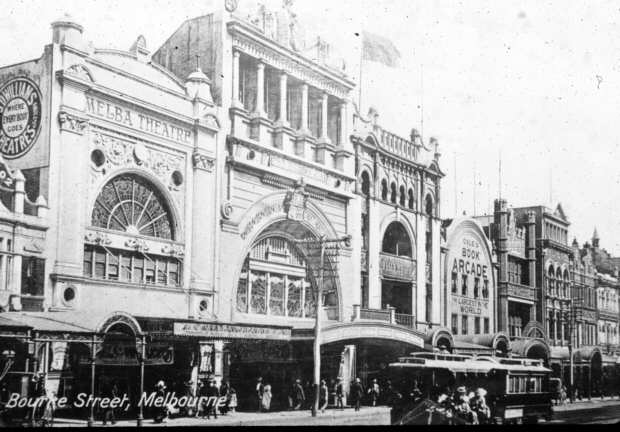
Back to Main Encylopaedia Contents
Melba Theatre, Melbourne

The Melba Theatre in Bourke Street opened on 8 June, 1911. [Thorne, Ross, Cinemas of Australia via USA, p. 220]. It was J D Williams' first picture theatre outside Sydney. [Brand, Simon, Picture Palaces and Flea-Pits, Dreamweaver Books, Sydney, 1983, p. 47] Williams had rebuilt it from an a former building which had opened in 1868 as The Colosseum, renamed Victoria Hall in 1882, and again as The Queen's Hall around the turn of the century. [Thorne, Ross, Cinemas of Australia via USA, p. 221] According to The Argus:
The scheme of colour is pale buff, yellow and blue, picked out with gold, and the walls are pic-torially in panels, which will, no doubt, hit the popular taste. It is the intention of the manage-ment to run a continuous picture exhibition here at the very minimum price - 6d. and 3d. Every patron will have a nice red-leather cushioned chair. ... An interesting selection of pictures was shown, accompanied by a full stringed orchestra.
The Argus, 9 June, 1911, p. 8.
It was claimed that the theatre was"a splendid structure which cost more than any other photo-play palace in the world".
Jeffries, C A, "The Greater J D Williams Banyan Tree", The Lone Band, 1 July, 1911, pp. 275-284 (quoted by Thorne, Ross, op. cit., p. 222).
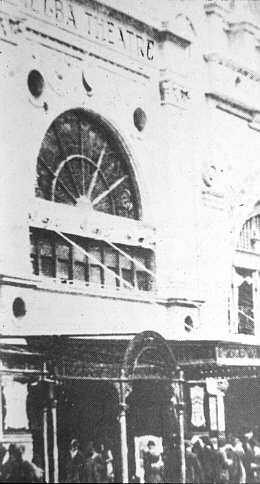
Possibly inspired by the success of the photoplayer at the De Luxe Theatre, the management decided to install a small pipe organ. This was a Style 1 Wurlitzer, with just four ranks of pipes, which must have sounded somewhat subdued in the 1200-seat auditorium. The organ was Opus 150, and was despatched from Wurlitzer's factory on 30 September, 1917. No definite date is known for its installation, which would probably have been in early 1918.
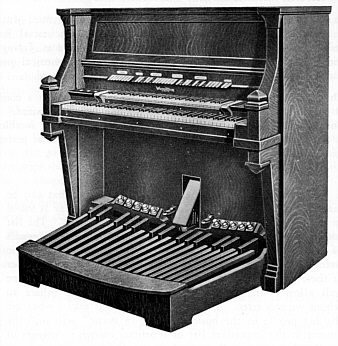
The Style 1 was one of Wurlitzer's earliest designs, which was superseded in the early 1920s by the Style 135. Its four ranks were: Trumpet, Concert Flute, Salicional and Vox Humana. It was controlled from a piano-style console with two manuals, the lower one being of 88-note compass to control the full range of the in-built piano. It could also be played automatically by means of dual roll-players behind the music desk. In addition to the pipes and piano, it contained a small selection of tonal and non-tonal percussions and effects. Unlike the photoplayers, in most cases it was fitted with a pedalboard, and the pipes and mechanisms were installed in a chamber, not in cabinets adjoining the console; however, according to its current owner, the chamber at the Melba was attached to the console. [Browne, Myles, letter, 1975.] It is interesting to note that in the Melba organ, the Salicional pipes were of wood.
The pipework on the main chest comprised the following:
Open Flute 61 pipes C-C
Wood String 56 pipes F-C
Vox Humana 49 pipes C-C (no top octave)
Trumpet 30 pipes compass not stated [Browne, Myles, letter, 1975.]
It may be presumed that there was, at least originally, an offset bass chest of 12 Bourdon pipes and, presumably, 5 string pipes.
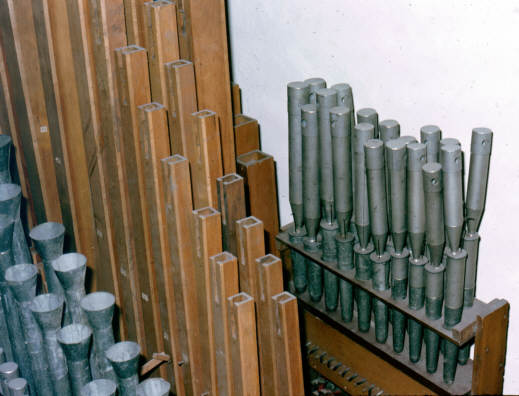
Myles Brown, of Armadale, purchased the main chest and pipework, plus the percussions, from the derelict instrument. He has since sold the Trumpet pipes, and in their place on the chest are 1928 Aeolian Clarinet pipes. He has these parts stored in his residence, where they were inspected by the author in 1975, and he told me that the chest action is exhaust tubular-pneumatic; all of which tends to suggest a photoplayer, rather than a Unit Orchestra.
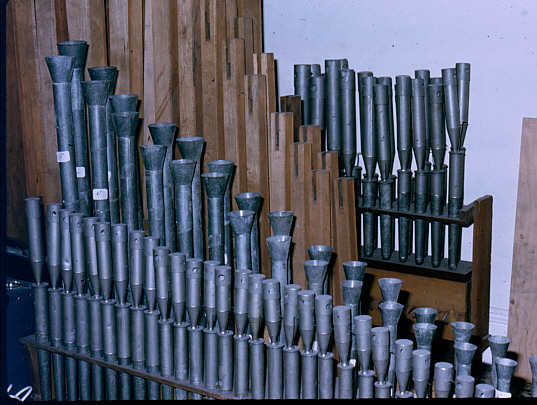
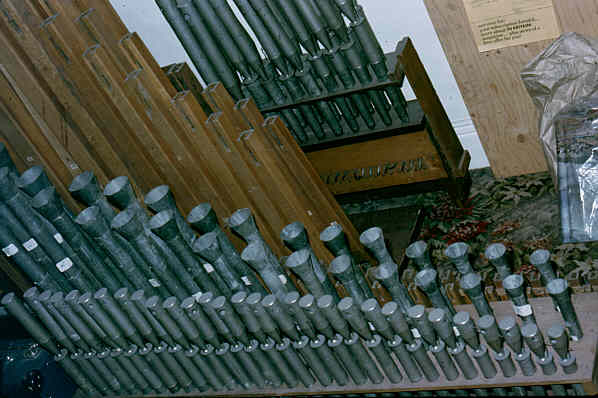
No organists' names at the Melba have come to light. Myles Browne was of the belief that the organ was mainly played by rolls, [Browne, Myles, letter, 1975.] and it may be that it was never played manually. The relays from the organ were acquired by the SA Division of TOSA, but were later scrapped. [Beames, Peter, "Wurlitzer Theatre Pipe Organs Come in all Sizes", SA TOSA News, TOSA (SA), Adelaide, January-February, 1992, p. 10]
The Melba was rebuilt as the Liberty Theatre, with 898 seats, in April, 1939, and was renamed the Odeon in 1951 when redecorated after fire damage. [Thorne, Ross, Cinemas of Australia via USA, p. 223] Presumably, the organ was removed in 1939.